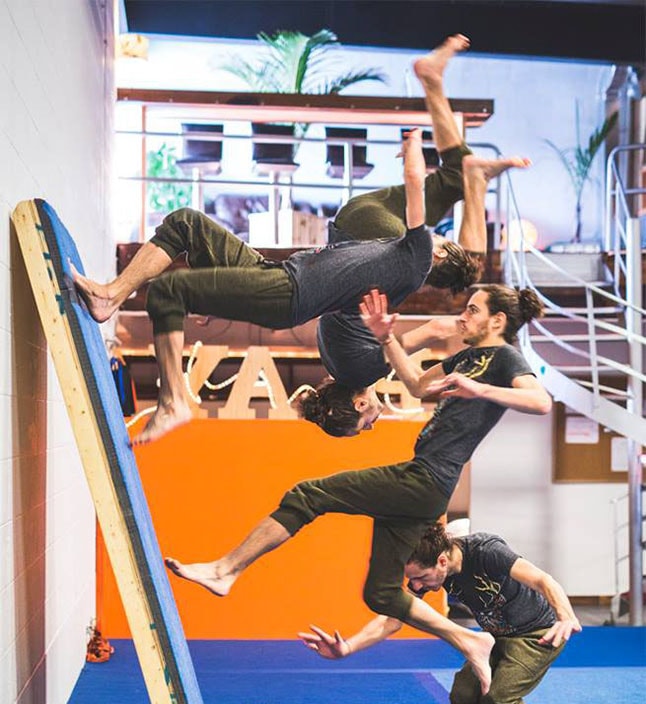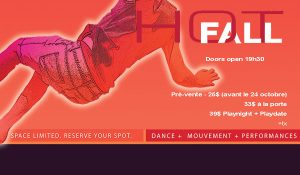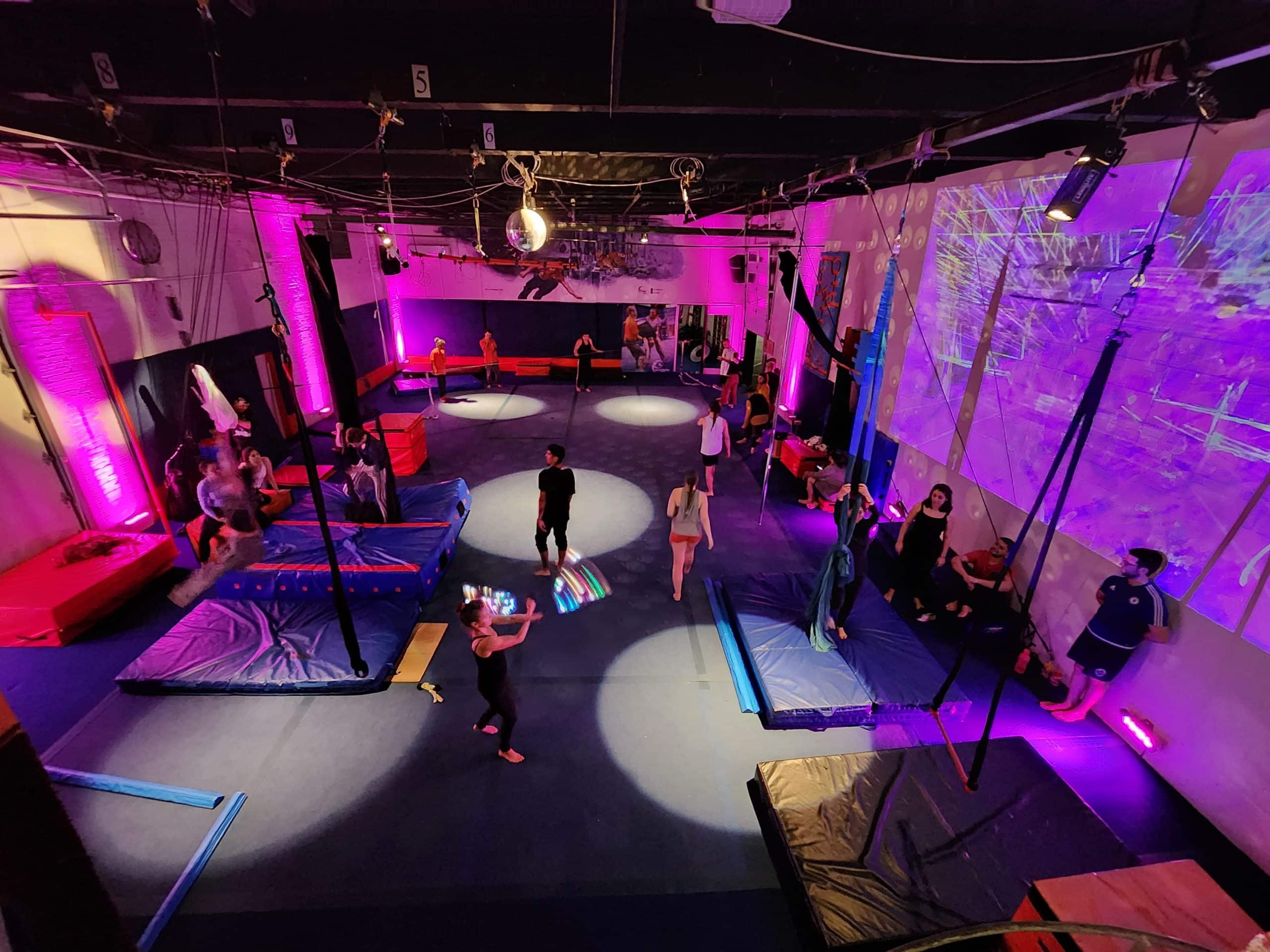Participant Level
Orange (Level 1): True beginner, no injuries, no pain, no experience with acrobatics, limited agility, needs to move more, first initiation to the world of Paragym and acrobatics.
Red (Level 2) - Active beginner, no injuries and no previous experience with acrobatics, can perform a “functional/imperfect” cartwheel, forward roll, tuck jump around knee height, hold your weight partially inverted against a wall for around 10 seconds
Blue (Level 3) - Athletic beginner, can perform a “fluid” cartwheel, tuck jump to hip height, a forward dive roll and hold the weight of their body on their hands fully inverted against a wall easily for 20+ seconds
Black (Level 4) - Experienced, Paragym student, has been following structured courses for over a year and are comfortable with most, if not all, Paragym manual assistance techniques. They do not need to be able to perform ALL acrobatic movements independently, but have a solid base of skills (some flips), good physical form, flexibility and spatial orientation; you can “send” and “land” movements autonomously and safely.
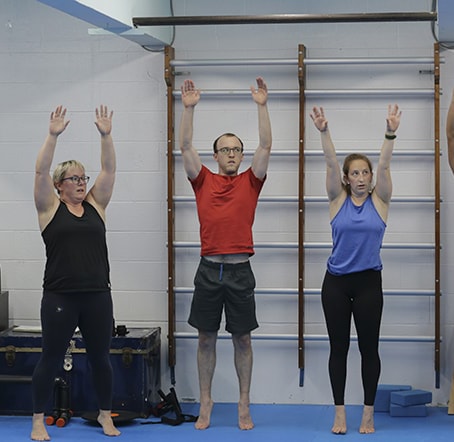

Curriculum
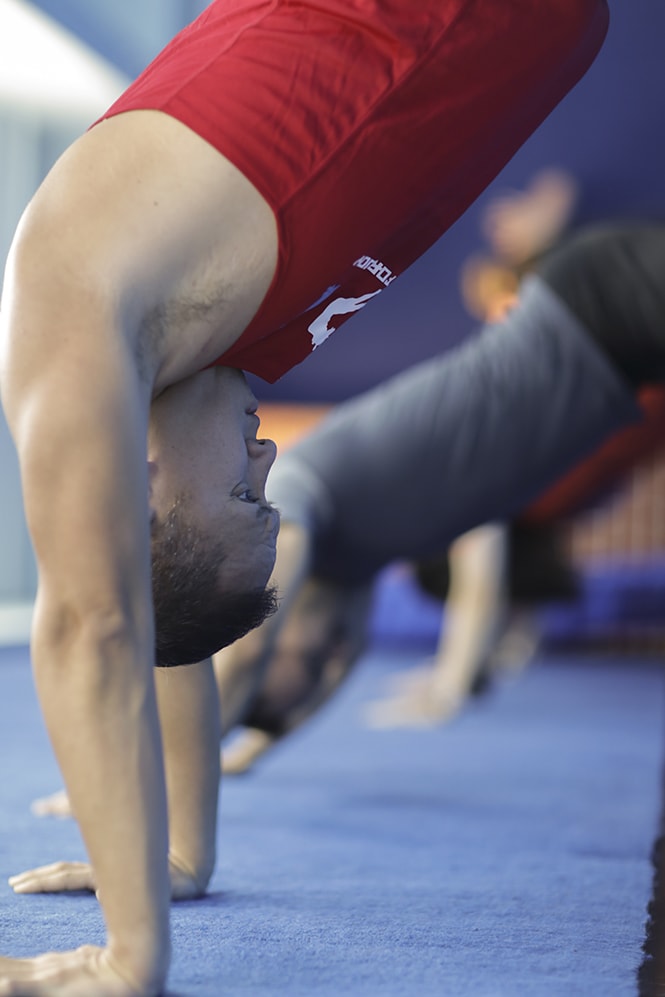
Orange (Level 1) - Flying Pig
Fundamentals level:Top 11 FMFs
- Rigid body lines
- Running patterns and steps
- External cartwheel
- Rocker and FWD roll
- Wall bridge to floor
- Jumping-landing (base pattern)
- Quadrupedal motions (slow cat)
- Combined take off patterns (3 planes)
- Twirling + spinning
- Partial wall Inversion
- Double assistance technique (3x3 spotted wall roll flip)
Participants must display competency in all 10 fundamentals categories to obtain *FUNDAMENTALS* badge.
Red (Level 2) - “Vital Phoenix”
You are active but without injury and are just starting out in your exploration of the world of Paragym acrobatics and need to learn the fundamental movements and principles. At this stage we’re talking about the learning of the 21 FMFs (Fundamental Movement Families). Also a first initiation to some basic flips, spotting and training squads.
The 21 Fundamental Movement Families
***Some movements will be covered more or less in different courses, based on the thematic of the course and the trainer’s chosen theme of the day; training approaches will also vary.
- Rigid body lines (all planes)
- Running patterns and steps
- Wheels (ext/int, 2D, 3D)
- Rolls (front/side/back)
- Bridge
- Jumps and landings
- Quadruped
- Combined take-off patterns (floor acrobatics)
- Twirls
- Inversion and Inverted balance
- Kicks
- Spins
- Springs
- Kips
- Whips
- Vaults
- Combined take-off patterns
- Transitions and sequencing
- Upright balance (unstable support)
- Partner resistance techniques (Interactive play conditioning)
- Partner assistance techniques (basic flip spotting)
And 6 compound acrobatic movements covered in level I :
- Front Flip
- Wall back flip
- Side Flip
- Front handspring
- Back handspring
- Back flip
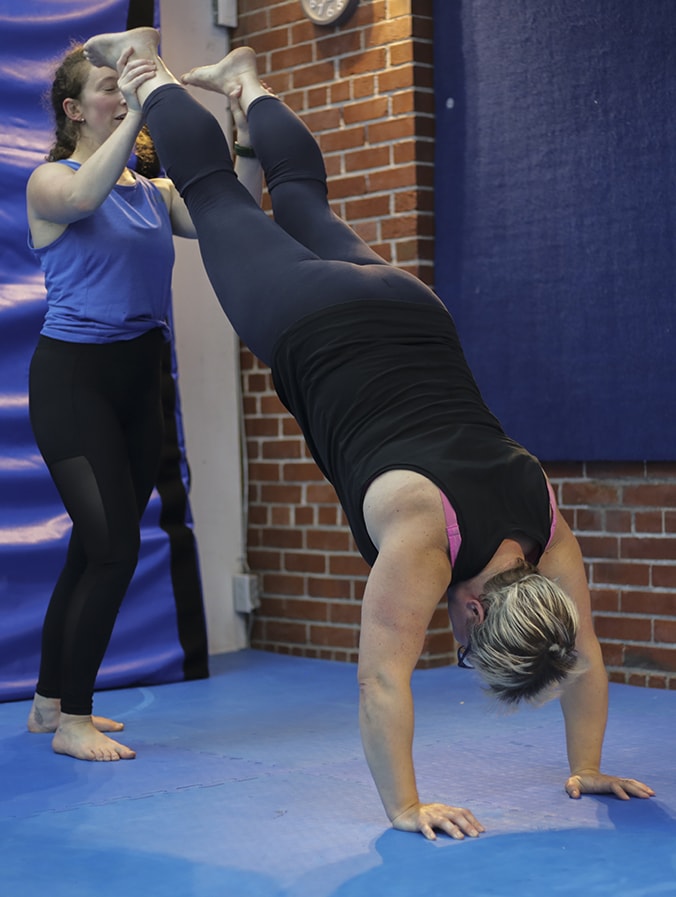
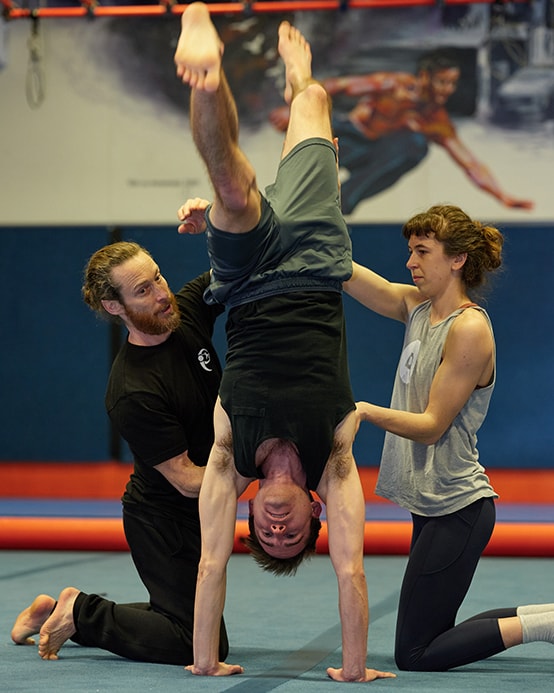
Blue (Level 3) : “Warrior Monk”
Level III implies a greater level of physicality and takes for granted that you have a sporty level of overall agility, but does NOT imply that you need to be an acrobat. Far from it. However, the pace of the course is faster. If we’re talking about “Acrobatics”, we continue the exploration of more “compound movements”, flips, still very much in mutually assisted teamwork dynamics; generally covering 2-3 moves vs. 1-2 moves in level 1. In Equilibrium we’re talking about holding a free-standing handstand and beginning some new transitions in-to and out-of handstand. In approach Obstacles, a level two course implies jump challenges and some obstacle flips. is highly movement specific conditioning, flexibility and coordination drills that see you completing a fully assisted rotation with good biomechanical form at the end with the help of friends.
The Top 11 flips
- Front Flip
- Wall back flip
- Side Flip
- Front handspring
- Back handspring
- Back Flip
- Windmill
- Webster (front + side)
- Flash kick
- Aerial cartwheel
- Round-off
Black (Level 4) “Steel Monkey”
With a solid base of FMFs, biomechanically sound success in assisted dynamics in most flips…You’re ready for The Leap to Autonomy - at this stage it’s more a psychological and spiritual challenge than anything else; that is to say, largely, overcoming fear. Although expect more complex autonomous movement challenges as well as an even greater variety of flips and acrobatic challenges.
Top 10 movements challenges
- Flask kick
- Palm backflip
- Arabian
- Round-off+ back/side
- Sequencing FMFs and level II flips
- Ramp, barrior, wall and step flips
- B-twist
- Raiz
- Helicoptero
- Advanced back/front/side flip techniques
